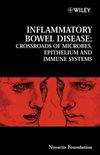Purinergic signalling--an overview.
引用次数: 179
Abstract
A brief account of the early history of extracellular signalling by ATP will be followed by a summary of the current subclassification of receptors for purines and pyrimidines. On the basis of cloning, transduction mechanisms and pharmacology, the P1 (adenosine) receptor family has 4 subtypes, while the P2 (ATP, ADP and UTP) receptor family has been divided into P2X ionotropic receptors (7 subtypes) and P2Y metabotropic G protein-coupled receptors (8 subtypes). The distribution of purinoceptors in both neuronal and non-neuronal cells and the physiology and pathophysiology of purinergic signalling will be reviewed. Examples of fast purinergic signalling include cotransmission and neuromodulation, exocrine and endocrine secretion, platelet aggregation, vascular endothelial cell-mediated vasodilatation and nociceptive mechanosensory transduction. Examples of slow (trophic) purinergic signalling include cell proliferation, differentiation and apoptosis in embryological development, neural regeneration, bone resorption, cell turnover of epithelial cells in skin and visceral organs, inflammation, wound healing and cancer. Finally the purinoceptor subtypes expressed on astrocytes, oligodendrocytes, Schwann cells, microglia, Müller cells and enteric glial cells will be summarized as well as evidence for non-lytic release of ATP from glial cells.嘌呤能信号——综述。
简要介绍ATP细胞外信号传导的早期历史,然后总结当前嘌呤和嘧啶受体的亚分类。根据克隆、转导机制和药理学,P1(腺苷)受体家族有4个亚型,P2 (ATP、ADP和UTP)受体家族分为P2X嗜离子受体(7个亚型)和P2Y代谢G蛋白偶联受体(8个亚型)。本文将对嘌呤受体在神经元和非神经元细胞中的分布以及嘌呤能信号传导的生理和病理生理进行综述。快速嘌呤能信号传导的例子包括共传递和神经调节、外分泌和内分泌分泌、血小板聚集、血管内皮细胞介导的血管扩张和伤害性机械感觉传导。缓慢(营养性)嘌呤能信号传导的例子包括胚胎发育中的细胞增殖、分化和凋亡、神经再生、骨吸收、皮肤和内脏器官中上皮细胞的细胞更新、炎症、伤口愈合和癌症。最后总结了在星形胶质细胞、少突胶质细胞、雪旺细胞、小胶质细胞、m ller细胞和肠胶质细胞上表达的嘌呤受体亚型,以及胶质细胞非溶性释放ATP的证据。
本文章由计算机程序翻译,如有差异,请以英文原文为准。
求助全文
约1分钟内获得全文
求助全文

 求助内容:
求助内容: 应助结果提醒方式:
应助结果提醒方式:


